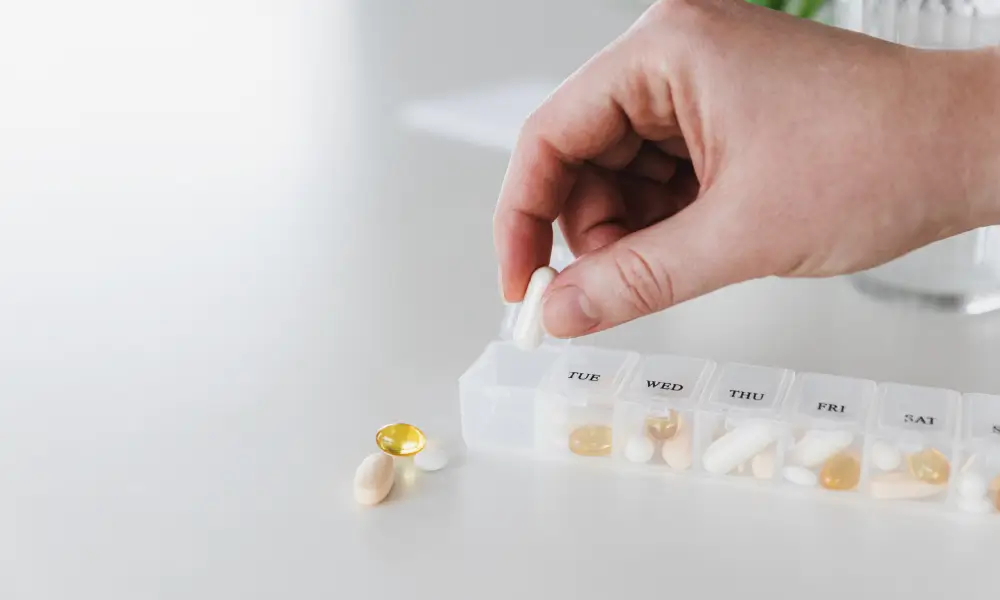Dopamine: Uses, Side Effects, Dosage, Interactions And More

Uses / Benefits of Dopamine
Healthcare teams use dopamine to fix blood flow problems during shock. The medication makes heart contractions stronger, sends more blood to vital organs, and can enhance urine production. Lower doses increase blood flow to the kidneys, while higher amounts improve heart output and blood pressure. Doctors prescribe Domperidone to manage nausea, vomiting, and certain stomach issues like delayed emptying of the stomach (gastroparesis).
How Does Dopamine Work?
The medication's effects change based on dosage levels. Small infusion amounts (0.5-2 mcg/kg/min) help blood vessels relax around organs, especially in the kidneys. Medium doses (2-10 mcg/kg/min) make your heart beat stronger and faster. Larger amounts squeeze blood vessels to raise blood pressure.
Conditions It Will Treat
This medication helps with shock syndrome from several causes including:
Open-heart surgery
Endotoxic septicemia
Congestive heart failure
Precautions While Using Dopamine
You should be extra careful if you have heart rhythm problems, blocked arteries, blood clots, or diabetes.
The medication is not safe if you have pheochromocytoma (adrenal gland tumour).
Your doctor needs to know about any allergies, especially when you have sulfite sensitivities.
Individuals with kidney or liver disease should consult their doctor before taking this medication.
What If You Missed a Dose?
Doctors give dopamine in hospitals, so missed doses rarely happen. All the same, you should never take twice the amount if you miss a dose.
How & When to Take Dopamine
Medical staff gives dopamine through an IV - it never comes as pills. Your doctor selects the right dose based on your condition, weight, and how well the medicine works for you.
Side Effects of Dopamine
Most people might experience:
Anxiety
Dizziness
Constipation
Serious reactions can include:
Irregular heartbeats
Confusion and depression
Breathing problems
Impulse control issues
Gangrene in extremities (rare)
Drug Interactions
Dopamine doesn't mix well with many medications like:
Beta-blockers
Diuretics
Halogenated anaesthetics
Haloperidol
MAO inhibitors
Phenytoin
Tricyclic antidepressants
Vasopressors
Dosage for Dopamine
Your doctor will set your exact dopamine dose based on your condition and body weight. Doctors usually start most adults and children with:
Starting dose: 2 to 5 micrograms per kilogram per minute through continuous IV infusion
Maintenance range: Can be increased to 50 micrograms per kilogram per minute
Storage Guidelines
Your dopamine medication needs proper storage. Here are the key guidelines:
Store between 20-25°C (68-77°F)
Keep away from light - store in outer carton
Never freeze the solution
Check for discolouration - avoid using if yellow, pink, purple or brown
Once diluted, solutions remain stable for 24 hours
Proper storage helps maintain the medicine's strength. You should check expiration dates on packaging and discard any unused portions of opened ampoules.
Dopamine vs Other Similar Medicines
Ever wondered how dopamine stacks up against other medications? This simple table breaks down the differences to help you understand your options better.
Medication | Primary Uses | Effectiveness | Notable Side Effects | Safety Profile |
Dopamine | Shock treatment | Increases blood pressure and cardiac output | Heart rhythm issues, gangrene with prolonged use | Lower safety ranking compared to alternatives |
Norepinephrine | Shock, hypotension | More powerful at increasing blood pressure | Similar to dopamine but with less cardiac effects | Higher safety rating versus dopamine |
Selegiline (MAO-B inhibitor) | Parkinson's disease | Most effective as a combination therapy | Headaches, abdominal pain | High ranking for avoiding dyskinesia |
Your doctor will select the most suitable medication based on your specific condition. Dopamine works well for shock treatment, but studies indicate norepinephrine might be safer for many patients.
Diet & Lifestyle Advice
You can boost your natural dopamine levels without medication more easily than you'd expect! Your daily habits shape how much of this feel-good hormone your body makes.
Start with foods rich in tyrosine - that's the building block of dopamine. Your brain will make more of this vital chemical from chicken, eggs, almonds, bananas, avocados, and green leafy vegetables.
High levels of saturated fat can mess with your brain's dopamine function. Try switching butter and full-fat dairy products with healthier options.
A natural dopamine boost comes from regular exercise. Runners know this as their famous "runner's high". Just 30 minutes of daily movement can make a big difference.
Your sleep schedule plays a huge role too. A consistent wake-up and bedtime helps keep your dopamine levels balanced.
Looking for a quick mood boost? Just play your favourite songs! Studies show your dopamine levels jump when you listen to music you love.
Your dopamine levels rise with meditation and mindfulness practices. Short daily sessions help even if you're just starting out.
Staying hydrated and eating regular meals stops mood-changing drops in blood sugar. Eat breakfast every day and space three balanced meals throughout your day. This keeps your dopamine system working smoothly.
Conclusion
Dopamine is a remarkable chemical that has an impact on every aspect of our lives. Our brain makes it on its own, and doctors use it as a drug in urgent situations. This potent substance doesn't just boost our mood - it controls how we experience pleasure, move around, and keep our bodies running.
Health problems can arise when dopamine levels become too high or too low. Doctors watch their patients closely when administering dopamine treatments. The medication's effects vary based on dosage, which makes it versatile but requires careful management.
That rush of satisfaction you feel after reaching a goal or enjoying your favourite food comes from this incredible chemical. Dopamine acts as your brain's reward system and saves lives as a medication. Our bodies are truly remarkable systems that work in fascinating ways.
FAQs
What is Domperidone used for?
Doctors prescribe Domperidone to manage:
Nausea
Vomiting
Certain stomach issues like delayed emptying of the stomach (gastroparesis)
Is Domperidone safe for increasing breast milk production?
Domperidone can raise prolactin levels and help with milk production, but using it to promote lactation requires careful medical advice. A small amount of the drug enters breast milk, and existing studies show little harm to babies nursing.
What are the common side effects of Domperidone?
The common side effects are:
Headache
Dry mouth
Stomach pain
Dizziness
Sore breasts or unusual menstrual cycles
Can Domperidone affect the heart or cause QT prolongation?
Yes. Domperidone may lead to QT prolongation, which is a dangerous heart rhythm issue that can cause life-threatening arrhythmias. The chances are greater for people aged over 60, those who already have heart problems or anyone using doses higher than 30 mg per day. It is essential to tell your doctor about any heart-related concerns, family cardiac history, or medicines you are using before starting Domperidone.
How long can you safely take Domperidone?
Domperidone is taken for the shortest time needed often no more than 7 days when treating digestive problems. To boost lactation, the treatment may last longer, but it should continue for a few weeks unless a doctor decides otherwise. Taking it for extended periods raises the chance of heart problems and other side effects. A doctor will decide how long you should stay on it, based on your condition and how you respond to it.
